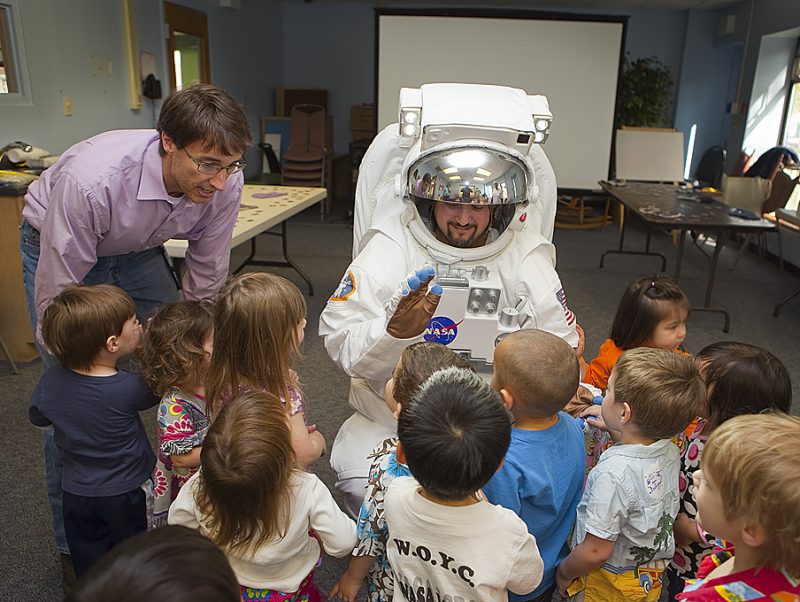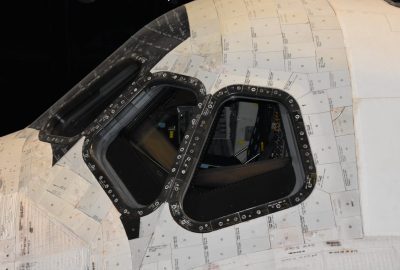Becoming A Space-faring Civilization Starts at Home and in the Classroom
August 21, 2018The world is changing for better and for worse. Humans are facing an enormous amount of challenges at all corners of the planet. Starvation, displacement, and psychological distress are prominent due to lasting conflict on almost every continent. Nationalism and xenophobia seems to have risen again in the wake of terror and violence in our society. People are scared and the future is dimming. But is that all we have?
The answer is no.
While society seems to be at a crossroads, one sector seems to be emerging with hope tagging along behind it. The kind of hope we once had in the post-World War II era and the years following the cold war. That hope came from space exploration.
The road to space has always been a peaceful one and a soft platform for diplomacy and cooperation between folks who wouldn’t see eye to eye otherwise. Today, an orbiting laboratory build in concert with over a dozen nations continues to operate not only a scientific expedition but a neutral entity where humans from different walks of life can work together toward a common goal: establishing and maintaining a permanent human outpost in space.
Today, the space community and industry is at a crossroads of its own. The risk and liability is moving from the public space sector (NASA, ESA, ROSCOSMOS) to the private sector. Emerging leaders like SpaceX, Virgin Galactic, and Blue Origin are joining industry veterans Lockheed Martin, Boeing, and Northrop Grumman to make sure that humans travel to and walk on a new world, relatively soon.
It’s been years since the Apollo era, where Americans travelled to walk on the moon…but not much else. The last flight being in 1972. A few years later, NASA introduced the celebrated Space Shuttle, which helped us build the International Space Station as well as place the Hubble Telescope in orbit. Both the Apollo and Space Shuttle era provided an inspiring look at the future and gave hope to millions of children around the world. But then it all stopped. The Space Shuttle was lost twice during missions and the nation mourned the loss of both the Challenger and Columbia crews. In 2011, the Space Shuttle landed for the very last time.
What would follow would be years of stagnation, confusion, and aimlessness when it came to the future of human spaceflight. NASA did continue to launch extraordinary science missions to Pluto, Jupiter, and of course, Mars but the question remains (especially for the latter) when will humans take those first steps into deep space? Why did we stop at the moon?
Today, NASA and its commercial partners Lockheed Martin and Boeing are constructing the Space Launch System and the Orion capsule spacecraft to begin flying humans beyond the ISS once again. Those missions will start in lunar orbit in a couple of years, where NASA intends to build a “gateway” that will one day lead to a human mission to Mars.
On the commercial side, Elon Musk says that the reason for SpaceX’s existence is to “make humans multiplanetary” by making space access cheaper. So far, the company has delivered by inventing the reusable rocket and dramatically reducing the cost of launching not only satellites but missions to the ISS. The company is preparing its new Dragon 2 spacecraft to launch NASA astronauts to the orbiting laboratory starting next year.
SpaceX has purchased a huge plot of land at the Port of LA in California to concurrently build a massive multi-purpose vehicle called “Big Falcon Rocket” while it begins flying NASA’s astronauts on its Falcon 9 and Dragon capsule. The BFR is intended to replace both those vehicles in a few years and is capable of all types of space missions. That includes a human mission to Mars, which is SpaceX’s ultimate goal. It’s also possible that the vehicle could be used for moon missions if NASA decides to use it.
But when it comes to the Moon, SpaceX has competition. Amazon founder and the world’s richest man, Jeff Bezos started his spaceflight company Blue Origin with the same mantra as SpaceX: to enable humans to live and work in space. It’s expected that the company will focus on lunar landings with cargo delivery and they’ve shown off an early version of their lunar lander concept. Blue Origin just completed its massive New Glenn factory just steps away from Kennedy Space Center in Florida where they will build the company’s orbital rocket.
Blue Origin has been focusing on suborbital flights these past few years and has completed 9 flights of its New Shepard rocket, which can carry tourists to the black of space for around $200,000 a seat while housing small science payloads on board. Jeff Bezos is expected to lay out the company’s plan for lunar missions before the end of the year.
This is where humanity stands on space exploration and it’s extremely exciting. There is hope and intrigue in exploring and even building new worlds. The idea of the next generation and beyond being able to choose between a life here on Earth or a life of exploration and research in space is a truly exciting one. But does the next generation know it? Probably not.
When you were kids you probably remember an entire week in social studies or science where your teacher told you about the moon landings and the Hubble telescope. They were always the best school days. You might get the build a mobile displaying the then-nine planets (sorry Pluto) and even watched documentaries about the Apollo era and the pioneers behind those missions.
Today, you’ll find these kinds of lessons few and far between around the world. Children are consumed by the technology they carry in their pockets and the constant flow of content flowing from the internet. Movies are always pushing the envelope, inspiring but also desensitizing the “awe” that once came along with discovery and exploration. But let’s be fair, films like Interstellar and The Martian have been essential in bringing space exploration back into households and into the cultural zeitgeist. But more has to be done to reach folks at a younger age, and really convince them that what they are seeing is not only possible but accessible to them in the future.
This is we why need a large-scale concerted effort to bring space exploration into the classroom. Not only to prepare their hearts & minds for a once-unreachable future but to convince them to take up secondary education and pursue careers in the aerospace industry, which is currently suffering from a talent drought. Here are some of our ideas:
Live Streaming daytime launches in classrooms and even replaying ones from the evening before. This will convey persistence in space travel and introduce young ones to the various players in the newly emerging commercial crew industry. When their parents and grandparents were growing up, rockets used to launch and then be disposed of in the ocean. Today, a new generation can watch as a rocket, the most complex and expensive machine ever conceived by humanity, delivers a cargo or crew to the space station and then come home for a touchdown on a ship at sea or on the ground nearby to the rocket’s launch pad. This is unique to them and landings are a visual feast for the eyes. And given the new emergence of the technology from both SpaceX and Blue Origin, there’s always a little unease and drama during landings. Modern-day launches are still edge-of-your-seat events.
There are quite a bit of astronauts out there internationally. Those who have flown and those who will fly soon. Not only should they stand as icons of exploration but they need to ground themselves to that students can see themselves in the same uniform. Astronauts should be on regular tours visiting classrooms, community centers, and even having town halls to discuss what they do. Imagine a career day but with just professionals from the space industry. And astronauts aren’t the only ones with a potent and heroic message, but scientists who lead the incredible missions to other planets and the engineers who build the spacecraft would provide inspiration to young ones.
Updates textbooks are needed everywhere. If you’re lucky enough to find a science or social studies textbook that features the human history of space exploration, you’ll find it a few years outdated. Even space articles published online are outdated after a few months. The space industry changes and adjusts this fast. With the movement of text-based learning moving digital and becoming more and more accessible via computers, this can make a space curriculum adjustable and current.
Astronomical event watch parties. Last year we saw the entire United States participate in the total lunar eclipse and it was wonderful. Now let’s do the same type of organization when Mars is close by and in opposition and when the Perseid meteor shower is at its peak––just to name a few. It’s time for towns and cities to dust off that old abandoned observatory and start hosting weekly events to gaze at the moons around Jupiter and at our next home, Mars.
Toys! We need toys. Digital is so yesterday and younger folks want cool gadgets and models they can build themselves. Let’s make easy and affordable build-yourself models of the Mars Opportunity rover, the Hubble Space Telescope, and even SpaceX’s Falcon 9 rocket. Many of these exist already but we need to find a market where they are more accessible to everyone. And they need to be cheaper too. A teacher should be able to buy an entire set of paper or cardboard models of the upcoming James Webb Space Telescope to help their students engage in what is it and what it will do.
Accessible versions of current apps offered by NASA to track the deep space network, receive raw images from the Juno spacecraft around Jupiter and even grab images from the Mars Curiosity rover. Children don’t typically have Twitter where most of this data is shared with the world.
Most important, we need parents. Parents who are willing to make space exploration part of the dinner table conversation. Parents who are willing to support their kids in tough fields like aerospace engineering, astrophysics, and orbital dynamics. Parents who will tell their daughters that space is for them too, and they can be the first to walk on a new world.









